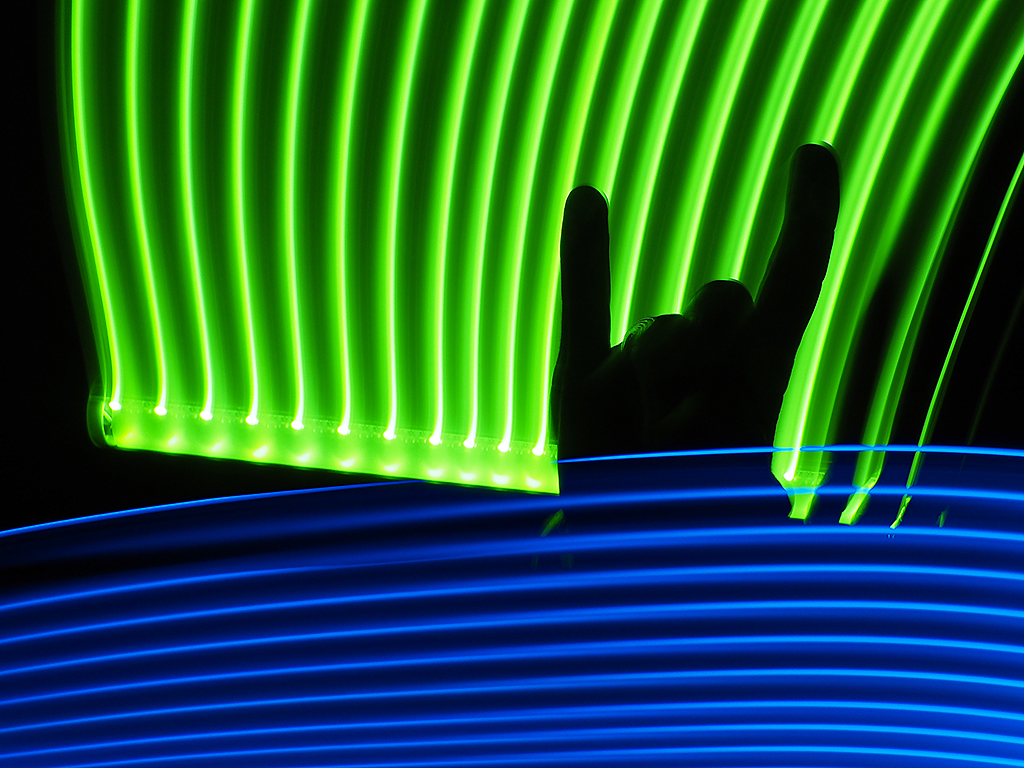Streaming is the future of music distribution. The ability to access more than 50 million songs with just a few pokes at your phone for free (or something close to it) is not only convenient but intoxicating. It’s the once-hypothetical Infinite Jukebox come to life.

Record labels certainly love it. All three of the majors now see more revenue come through streaming than any other source. Truth be told, they’d be happy to see all physical product go away thereby eliminating the need for manufacturing, warehousing, transportation, and dealing with record stores that keep going out of business.
READ MORE: ‘Rocketman’ review — Elton John movie has the hits, with a few misses
Thanks to streaming technology, the demand for music has never been greater nor has music consumption ever been this high. But there are some downsides to this revolution which emphasizes access to music over possession, a shift that may not bode well for the future of music.
Composing music is increasingly driven by data
Behind all the streaming platforms are massive server farms that collect and process how users are listening to music. That data is used to determine which songs resonate with fans and which don’t. Digging deeper, it’s possible to find common data points that help create a hit song.
For example, examining the play history of billions of streams, we know that about 24 per cent of listeners are going to skip to the next song in the first five seconds. Another 29 per cent will bail after 10 seconds and another 35 per cent will be gone by the time the song is 30 seconds old.
Those numbers are crucial because a streaming service doesn’t pay out for a stream until 30 seconds of a song has passed. This means producers and songwriters are throwing everything they can at those first 30 seconds to make sure they get paid. This means shorter intros, putting the choruses up front, and adding as many sugar-high hooks as possible before the song is a minute old.
One of the best recent examples of this method of attention-grabbing music composition is the first 40 seconds of Taylor Swift’s Me. Listen as one hook drags you right to the next with no delay.
Songs are getting shorter
Another data-driven trend is the length of a song. Mark Ronson, producer of hits like Uptown Funk with Bruno Mars, says that the sweet spot for a pop song on Spotify is three minutes and 20 seconds. Anything longer and you risk being hit with the skip button. Even though the artist is paid after 30 seconds, Spotify notes how often people will skip to the next song before it’s over, driving down its appeal rating within Spotify’s algorithm, thereby preventing it from bubbling up on playlists. The latest data says that nearly 47 per cent of users will move on before the song ends.
In 2018, the average length of a song on the Billboard Hot 100 was three minutes and 30 seconds. The number of songs under two-and-a-half minutes has increased by six per cent over just three years. Compare that to the average song length in 2000, which was about four minutes. The number of songs under 2:30 was almost zero.
READ MORE: Jussie Smollett deal was in the works when charges dropped, documents reveal
- ‘Shock and disbelief’ after Manitoba school trustee’s Indigenous comments
- Invasive strep: ‘Don’t wait’ to seek care, N.S. woman warns on long road to recovery
- ‘Super lice’ are becoming more resistant to chemical shampoos. What to use instead
- Canadian food banks are on the brink: ‘This is not a sustainable situation’
It turns out that the shorter the song, the more it’s liked by the algorithms. If you’re an artist, you’re thinking about writing shorter songs because listeners will cycle through more of them. More listens equals more money. So much for the nine-minute rock opus.
Record labels are using this data
Labels are insatiable when it comes to the massive amounts of data which streaming provides on how people consume music. The thinking is that the more data they have, the lesser the risk of releasing a flop. There are also programs like Hit Song Science that use machine learning to analyze a new song for its chances of being a hit. Labels have been using such technology for years in hopes of being able to predict the success of any given song.
This presumes that you can use data to write a hit song. But won’t following the data just result in a tsunami of songs that all sound the same? Won’t you just replicate what’s already been done?
The concept of the record album is in trouble
When Napster first appeared in 1999, people got into the habit of acquiring individual songs instead of full albums. Then, when Steve Jobs introduced the a la carte method of buying songs with iTunes in 2003, the hitherto indivisible record album, the currency of the music industry, began to fail. Our predilection to having just the songs we want, while leaving out all the ones we don’t, has become more pronounced in the era of streaming.
Fans definitely prefer singles and not deep album tracks. You can put them up on Spotify or whatever, but the chances of them being heard are infinitesimal.
Artists are waking up to this. Why go through the trouble and expense of recording a full album? I’m often asked by acts whether it’s worth it. “Maybe we should just release an EP or drip out a series of singles.” Maybe you should.
Gaming the system
Data can also be used against itself.
The Pocket Gods is a U.K. band that realizes that it’s pointless for them to write songs longer than 30 seconds. That’s why their 2017 album, 100×30, features 100 songs no longer than 42 seconds. Again, the hope is that shorter songs will cycle through more quickly, resulting in more streaming revenue.
READ MORE: Cineplex theatres host free Raptors viewing parties across Canada
Even more clever was Vulpeck, a group based out of Michigan. They issued an album entitled Sleepify, which consists of 30-second tracks that are completely silent. They asked their fans to stream the record constantly, thereby reaping revenue without playing a note. They made $20,000 in royalties before Spotify told them to cut it out.
The growing scourge of fake artists
Not all artists on streaming services are what they seem. Earlier this year, I received an email from someone asking about an artist listed on Spotify as Latesha Escalero who sounded suspiciously like Van Morrison. It turns out it was Van Morrison but one of his albums was illegally reposted and created to an artist who didn’t exist. Whoever was behind Latesha Escalero was scooping money away from Van.
Then there are acts like Cappisko, Hundra Ao, Onxyia, Bergenulo Five, DJ Bruej and Bratte Night. Go ahead, try and Google them. They don’t seem to have any internet presence except on Spotify, where they seem to be cropping up on playlists, sometimes racking up tens of thousands of plays.
There are no fan pages, no Facebook pages, no photos, no gig reviews or tour schedules, or links to record labels. In other words, these tracks are getting forced on users. They show up in streams completely unbidden and unwanted. It’s the song equivalent of spam. They are fake.
According to a BBC investigation, all material by these acts consists of lyric-free, short, simple song titles, and nearly non-existent artwork. There’s even a name for them now: mysterycore. How is it that thousands of Spotify users have been exposed to artists that no one has ever heard of?
And it’s not just ripoffs and mysterycore artists. Sony appears to have engaged in a variation of the fake artist scam with its sleep-inducing Sleepy John ambient sound playlist.
And finally, headphone culture
Forty years ago, headphones were heavy, clunky things that you used for private, solitary listening at home. But then, in 1979, Sony released the Walkman. Not only was this the first successful ultra-portable personal music device, but the Walkman also came with lightweight good-sounding headphones. It was the beginning of headphone culture, a time when humans began walking around in public, sealed off from each other in their own bubble of music.
So what’s the problem with that?
- Critics say this has created new levels of social alienation. We don’t interact with each other the way we used to.
- By having total control over their listening environment, people tend to listen only to music that they find appealing and risk never being taken out of their musical comfort zone.
- This ability to shut out any unwanted music has led to the concept of “egocasting” in all forms of media consumption. There’s a tendency to take in the news and information we want, not the news and information we should. Is it any wonder the spread of fake news is such a growing problem?
- Then again, this is a noisy, distracting world. Maybe headphones are the only way to preserve the only private space we still have: our heads.
Like I said at the beginning, music and tech have always gone hand-in-hand. Where might these current trends lead in the future? No idea, but it’s certainly something all music fans should watch.
—
Alan Cross is a broadcaster with 102.1 the Edge and Q107, and a commentator for Global News.
Subscribe to Alan’s Ongoing History of New Music Podcast now on Apple Podcast or Google Play






Comments